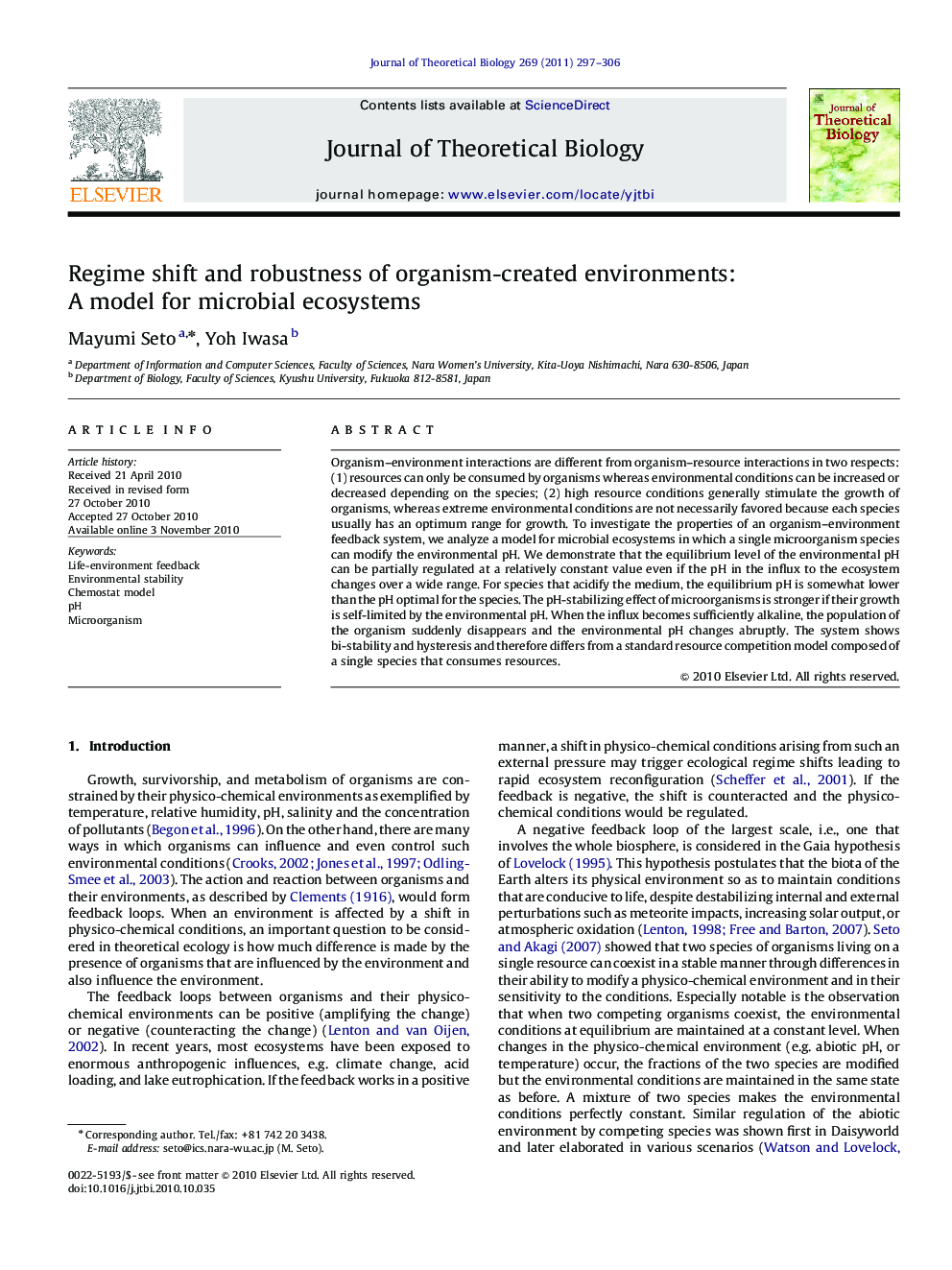| Article ID | Journal | Published Year | Pages | File Type |
|---|---|---|---|---|
| 6371548 | Journal of Theoretical Biology | 2011 | 10 Pages |
Abstract
Organism-environment interactions are different from organism-resource interactions in two respects: (1) resources can only be consumed by organisms whereas environmental conditions can be increased or decreased depending on the species; (2) high resource conditions generally stimulate the growth of organisms, whereas extreme environmental conditions are not necessarily favored because each species usually has an optimum range for growth. To investigate the properties of an organism-environment feedback system, we analyze a model for microbial ecosystems in which a single microorganism species can modify the environmental pH. We demonstrate that the equilibrium level of the environmental pH can be partially regulated at a relatively constant value even if the pH in the influx to the ecosystem changes over a wide range. For species that acidify the medium, the equilibrium pH is somewhat lower than the pH optimal for the species. The pH-stabilizing effect of microorganisms is stronger if their growth is self-limited by the environmental pH. When the influx becomes sufficiently alkaline, the population of the organism suddenly disappears and the environmental pH changes abruptly. The system shows bi-stability and hysteresis and therefore differs from a standard resource competition model composed of a single species that consumes resources.
Related Topics
Life Sciences
Agricultural and Biological Sciences
Agricultural and Biological Sciences (General)
Authors
Mayumi Seto, Yoh Iwasa,
